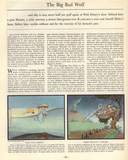



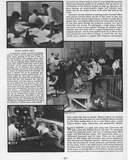

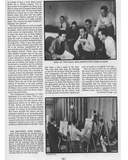

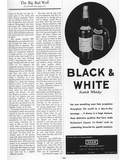
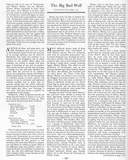
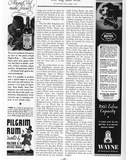
Last month Format: told how Technicolor came to a brief period of abortive popularity in I930 with a two-color process for films; how it then lapsed for lack of smoothness and fidelity; and how, two years later, it began a renascence with the perfection of a process in three colors. The Silly Symphony emphasized that renascence with an animated cartoon (The Three Little Pigs) which played three separate times at Roxy's, made the world laugh and cry for joy, and grossed $150,000 in fifteen months. Therefore FORTUNE promised to examine the Silly Symphony and to find out how the miracle was accomplished. Herein FORTUNE keeps its promise.
Walt Disney’s rambling, Spanish studio in Hollywood, California, is a factory for making myths. A factory, because there the technical problem of producing the 10,000 or so separate drawings that go into a one-reel animated cartoon (some eight minutes’ entertainment) is solved with the utmost speed and efficiency which modern industrial methods will permit. But the result is no simple product like cigarettes or razor blades; it is myth – that same delicate balance between fantasy and fact, poetry and comic reality, which is the nature of all folklore. In Disney's studio at twentieth-century miracle is achieved: by a system as truly of the machine age as Henry Ford's plant at Dearborn, true art is produced. Thereafter we shall examine that system and see how it resembles and how it differs from the automatic simplicity of an assembly line. But before that comes the question: why is the product art? For if the product is spurious, the entire system is nothing more than a penny-catching device, and there is no need to discuss it further.
[…]